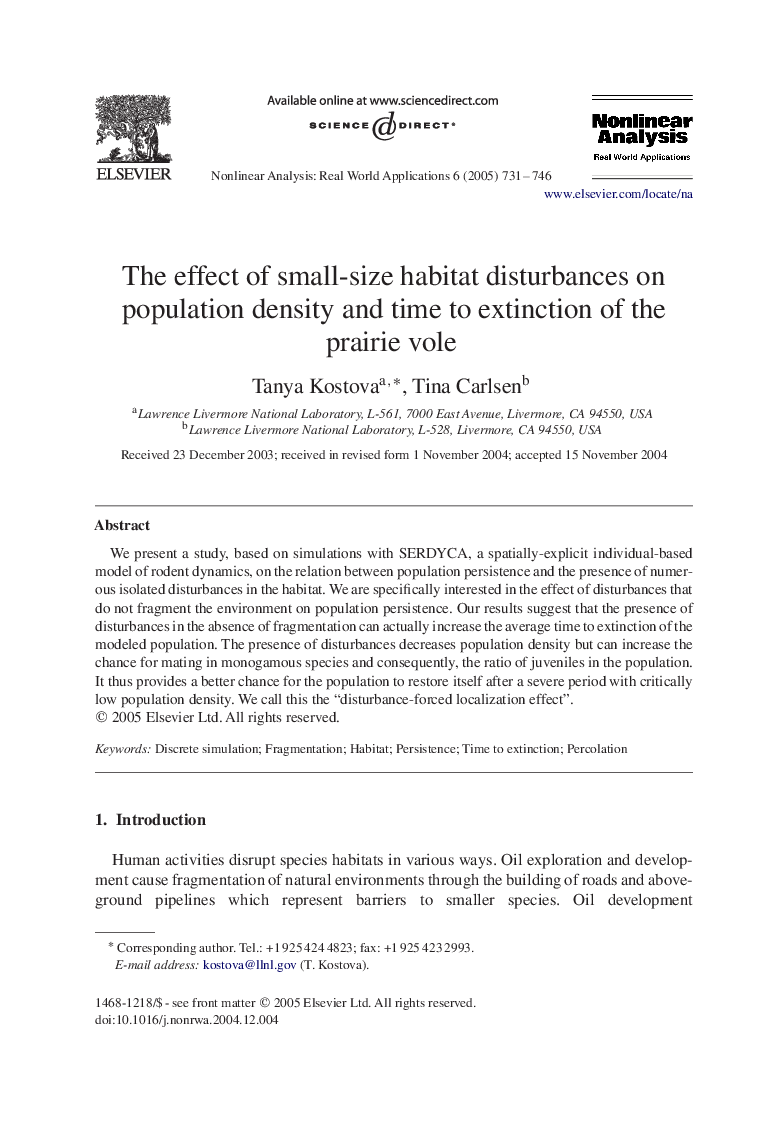| Article ID | Journal | Published Year | Pages | File Type |
|---|---|---|---|---|
| 10426670 | Nonlinear Analysis: Real World Applications | 2005 | 16 Pages |
Abstract
We present a study, based on simulations with SERDYCA, a spatially-explicit individual-based model of rodent dynamics, on the relation between population persistence and the presence of numerous isolated disturbances in the habitat. We are specifically interested in the effect of disturbances that do not fragment the environment on population persistence. Our results suggest that the presence of disturbances in the absence of fragmentation can actually increase the average time to extinction of the modeled population. The presence of disturbances decreases population density but can increase the chance for mating in monogamous species and consequently, the ratio of juveniles in the population. It thus provides a better chance for the population to restore itself after a severe period with critically low population density. We call this the “disturbance-forced localization effect”.
Related Topics
Physical Sciences and Engineering
Engineering
Engineering (General)
Authors
Tanya Kostova, Tina Carlsen,
